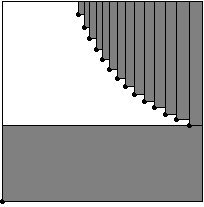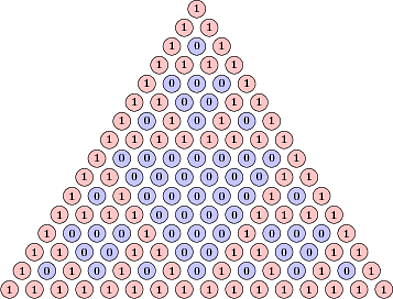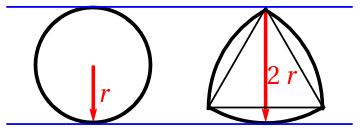If you are a high-school student who wants to conduct research in mathematics, you should check out the MIT PRIMES program. If you enjoy solving the problems in our entrance test, that’s the first indication that you might want to apply. But to determine if the program is right for you, and you are right for the program, please read the following questions and answers which have been prepared for you by Tanya Khovanova, the PRIMES Head Mentor. (This only addresses applications to PRIMES Math, and only to the research track)
Question: I do not like math competitions. Should I apply?
Answer: Math competitions are completely separate from research in mathematics. If you enjoy thinking about mathematics for long periods of time and are fascinated by our test questions, you should apply.
Question: I am good at math, but I really want to be a doctor. Should I apply?
Answer: No. PRIMES requires a huge time commitment, so math should really be your most significant interest.
Question: I want to get into Harvard, and PRIMES looks good on a resume. Should I apply?
Answer: PRIMES does look good on a resume. But if you are more passionate about, say, climate change than math, what would Harvard’s admission committee see? Our experience in the program is that if math isn’t your top interest, your math student may not be sufficiently impressive to be accepted at Harvard as a math researcher. At the same time, you will not be accepted as the top climate change student as you didn’t invest your time in that. Math research is a hard way to earn points for college. See also, the essay, Thoughts on research by Simon Rubinstein-Salzedo.
Question: My parents want me to apply. Should I apply?
Answer: Your parents will not be accepted to the program. Do not apply if you do not really, really want to.
Question: Your website suggests that I should spend ten hours a week on the PRIMES project. I can only spend five. But I am a genius and faster than other people.
Answer: We already assume that you are a genius and faster than anyone else you know. Five hours a week are not enough for a successful project.
Question: I looked at the past PRIMES projects and nothing excites me as much as my current interest in Pascal’s triangle. I doubt I should apply.
Answer: When you start working on a project, you will learn a lot about it. You will understand why, for example, Cherednik algebras are cool. The excitement comes with knowledge and invested time. Not yet being excited about Cherednik algebras is not a good reason not to apply. Besides a lot of exciting mathematics is done between several different fields.
Question: I really want to do nothing else than study Pascal’s triangle.
Answer: We try to match our projects to students’ interests as much as we can. But we almost never can fulfill a specific request as above. You might get a project related to Young diagrams, which are connected to quantum Pascal’s triangle. If this connection doesn’t excite you, you shouldn’t apply.
Question: I think I will be better positioned for research if I spend five more years studying.
Answer: There is nothing wrong with this approach. For many years the standard was to start research in graduate school. Our program is innovative. At PRIMES we are trying a different model. It may sound scary, but you will learn everything you need to know in order to do your project. If the project is in representation theory, for example, you will only learn what you need—not the whole theory. Our hope is that eventually you will take a course in representation theory and expand your grasp of it and see the bigger picture behind your project. We have a reading track for people like you who reside in Boston area.
Question: I love math, but I am not sure that I want to be a mathematician. Should I apply?
Answer: Many people start loving math early in life and then discover that there are many other things that require a similar kind of brain: computer science, cryptography, finance, and so on. We do not require from our students a commitment to become mathematicians. If you want to try research in math, you should apply. If students decide that they do not want to do research in math after finishing our program, we do not consider that a negative result. One way or another, the experience of PRIMES will help you understand better what you want to do with your life.
Question: I want to get to the International Math Olympiad. I am afraid that the time the research project takes prevents me from preparing for competitions. Should I apply?
Answer: People who are good at Olympiads often have fantastic brain power that helps in research. On the other hand, research requires a different mind set and the transition might be painful. It is possible, but not trivial to succeed in both. It is up to you to decide how you want to spend your time.
Question: I like number theory, but I do not see past PRIMES projects in number theory.
Answer: Doable number theory projects are hard to come by and we have fewer number theory projects than students who want to do number theory. There are many high-school programs that teach number theory including PROMYS and Ross programs. Our applicants like number theory because they were exposed to it. During PRIMES you will be exposed to something else and might like it as much.
Question: I found a local professor to work with on a research project. Should I apply to PRIMES?
Answer: PRIMES requires that you devote 10 hours a week to research for a year. It is unrealistic to do two research projects in parallel. Choose one. Working with someone in person may be better than by Skype at PRIMES. Also, usually our mentors are not professors, but rather graduate students. On the other hand, they are MIT grad students and projects are often suggested by professors. Our program is well structured. We guarantee weekly meetings in the Spring, we give extra help with your paper, and we have a conference. It is up to you to decide.Share:

















